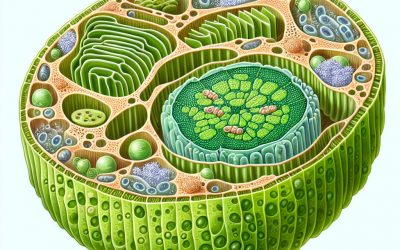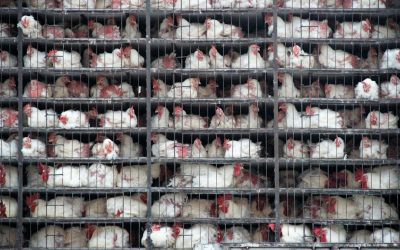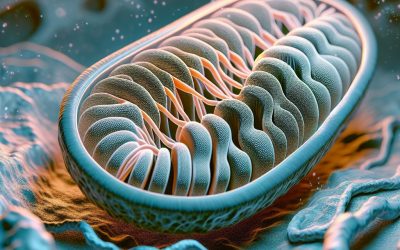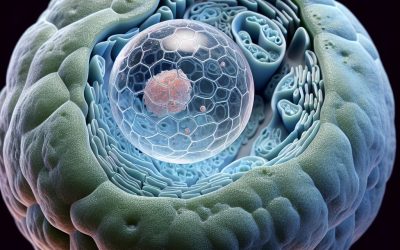Biology (from the Latin ‘bios’ meaning life and ‘logia’ meaning study of) is the study of all organisms and all aspects of their life-cycles.
Biology
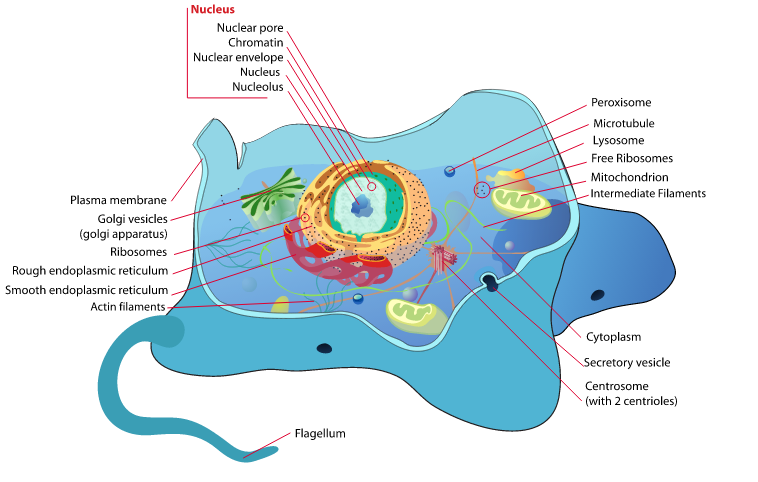
Biology (from the Latin ‘bios’ meaning life and ‘logia’ meaning study of) is the study of all organisms and all aspects of their life-cycles. The subject of Biology, as we know it today, was born in the nineteenth century along with physics, chemistry and the scientific method. Before then ‘Natural Philosophy’ which was the study of nature and the physical universe, included biology, chemistry and physics.
Natural Philosophy The study of our natural world is known to date back to the time of Mesopotamia around 3,100 BC but as this was the beginning of written historic record the study probably existed long before this time. Modern Biology The first great development of modern biology came from Charles Darwin, who is often referred to as the father of modern biology. Although known for his work ‘On the Origin of Species’ (published in 1859), Darwin produced nineteen additional publications, wrote hundreds of scientific papers and fourteen thousand letters, all of which laid the foundations for Biology as a subject we recognise today. Although he did not invent the theory of evolution, he certainly made the idea more accessible to the world. His theory was evolution by natural selection; where by an organism with a mutation may be better adapted to certain environmental changes and therefore improve their chance of survival. This means the organism with the useful mutation is more likely to survive, reproduce and hopefully pass on the useful mutation. Overtime species are able to adapt to the world around them and this process gave the Galapagos Islands (and the world) the rich diversity of its inhabitants. Deoxyribonucleic acid or DNA was first discovered in 1869 but its role was not known at the time. It was in 1943 that it was discovered that it is DNA that is responsible for programming the genetic makeup of organisms and passing on the mutations Darwin had discovered. This new understanding of how amino acids are programmed on a cellular level to make up various parts of the organism was a huge leap forward but new profound discoveries are being made everyday in the field of biology.
Carnivora Chronicles: A British Guide to Canine, Feline, Bears, Racoons, Sea Lions and Seals
Carnivora Chronicles is a blog dedicated to exploring the fascinating world of carnivores. In this article, we will be focusing specifically on the carnivores found in Britain. While Britain may not be known for its diverse range of carnivorous species, it is home to a number of interesting and unique animals. From wild canines to mighty bears, raccoons to seals and sea lions, the British Isles have their fair share of carnivorous inhabitants. Join us as we delve into the world of British carnivores and discover the wonders of these remarkable creatures. Summary Carnivora Chronicles is a British guide to various carnivorous animals, including canines, felines, bears, racoons, sea lions, and seals. The wild canines of Britain range from foxes to wolves, and they play an important role in the ecosystem. Feline frenzy covers the cats of Britain, including domestic cats, wildcats, and lynx. The mighty bears of Britain include brown and black bears, and they are a rare sight in the wild. Racoons on the rise introduces the invasive species and the potential impact on the ecosystem. The seals and sea lions of Britain are a coastal delight, and they are important for maintaining the balance of the marine ecosystem. Carnivorous animals have a varied diet, ranging from meat to fish and insects. Carnivores play a crucial role in the ecosystem, regulating prey populations and maintaining the balance of nature. Conservation efforts are underway to protect carnivorous species in Britain, including habitat preservation and anti-poaching measures. Fascinating facts about carnivores include their hunting techniques, social behavior, and unique adaptations for survival. The Wild Canines of Britain One of...
Discovering the Fascinating World of Artiodactyla: From Pigs to Giraffes
Artiodactyla is a scientific order that includes even-toed ungulates, or animals with an even number of toes on each foot. This diverse group of mammals includes species such as deer, pigs, giraffes, and camels. Artiodactyls play a crucial role in the ecosystem as herbivores, helping to maintain the balance of plant populations and providing a food source for predators. One fascinating fact about Artiodactyla is their ability to adapt to various habitats and climates. From the cold forests of Scotland to the arid deserts of Africa, these animals have evolved to thrive in different environments. Another interesting aspect of Artiodactyla is their social behavior. Many species form herds or groups, which allows them to better defend against predators and find food. The mating rituals and communication methods of these animals are also intriguing to study. Summary Artiodactyls are a diverse group of mammals with an even number of toes and include pigs, deer, giraffes, and more. Native artiodactyls include red deer, roe deer, and fallow deer, which have played important roles in culture and history. The reintroduction of wild boar to Britain has been controversial, but they were once a native species and can help restore ecosystems. Moose were once present in Britain but were hunted to extinction; there are now efforts to reintroduce them. Exotic artiodactyls like giraffes and camels can be found in zoos and wildlife parks. The Diversity of Artiodactyla: From Pigs to Giraffes In Britain, there are several species of Artiodactyla that can be found in various habitats across the country. One of the most iconic species is the red deer (Cervus elaphus), which is...
The Importance of Understanding the Plant Cell Wall: Exploring Its Structure and Function
The plant cell wall is a complex structure that surrounds and protects plant cells. It is composed of various components, including cellulose, pectin, hemicellulose, and lignin. Understanding the plant cell wall is crucial for understanding plant growth and development, as well as for developing strategies to improve crop yields and resistance to pests and diseases. Key Takeaways The plant cell wall is a complex structure that provides support and protection to plant cells. Cellulose is the most abundant component of the plant cell wall and is responsible for its strength and rigidity. Pectin is a key component of the plant cell wall that helps to regulate cell growth and development. Hemicellulose plays an important role in the plant cell wall by providing flexibility and elasticity. Lignin is a complex polymer that provides additional strength and protection to the plant cell wall. The Role of the Plant Cell Wall in Plant Growth and Development One of the primary functions of the plant cell wall is to provide support and protection to the plant. The cell wall gives rigidity to the plant cells, allowing them to maintain their shape and withstand external pressures. It also acts as a barrier, protecting the plant from pathogens and other harmful substances. In addition to support and protection, the plant cell wall also plays a crucial role in regulating water and nutrient uptake. The cell wall acts as a filter, allowing water and nutrients to pass through while preventing the entry of harmful substances. It also helps in maintaining the turgor pressure of the cells, which is essential for cell expansion and growth. Furthermore, the...
Unleashing the Power of Chloroplast: The Key to Sustainable Agriculture
Chloroplasts are essential organelles found in plant cells that play a crucial role in plant growth and development. These green structures are responsible for photosynthesis, the process by which plants convert sunlight into energy. Chloroplasts contain chlorophyll, a pigment that captures light energy and uses it to produce glucose, the primary source of energy for plants. Without chloroplasts, plants would not be able to produce their own food and sustain themselves. Key Takeaways Chloroplast plays a crucial role in plant growth and development. Harnessing the energy of chloroplast can increase crop yield. Chloroplast engineering can improve photosynthesis efficiency. Chloroplast-based biotechnology can promote sustainable agriculture. Chloroplast manipulation can enhance nutrient uptake and utilization. Understanding the Role of Chloroplast in Plant Growth and Development Chloroplasts have a unique structure that allows them to carry out photosynthesis efficiently. They are enclosed by a double membrane and contain stacks of thylakoid membranes, where the chlorophyll molecules are located. These thylakoid membranes are interconnected by lamellae, which form a network that maximizes the surface area available for light absorption. The main function of chloroplasts is to convert light energy into chemical energy through photosynthesis. During this process, chlorophyll molecules capture photons from sunlight and use their energy to split water molecules into hydrogen and oxygen. The hydrogen is then used to produce ATP (adenosine triphosphate), a molecule that stores energy, while the oxygen is released into the atmosphere as a byproduct. Harnessing the Energy of Chloroplast to Increase Crop Yield The energy produced by chloroplasts can be harnessed to increase crop yield through various methods. One approach is to genetically modify crops to enhance...
Exploring the Fascinating World of Plant Cells: Unveiling Their Unique Characteristics
Plant cells are the basic structural and functional units of plants. They are eukaryotic cells, meaning they have a nucleus and other membrane-bound organelles. Plant cells are vital to the ecosystem as they are responsible for the growth, development, and reproduction of plants. Without plant cells, life on Earth as we know it would not be possible. Key Takeaways Plant cells are the building blocks of plants and play a crucial role in sustaining life on Earth. The anatomy of plant cells includes various structures such as the cell wall, chloroplasts, and vacuoles, each with unique functions. Plant cells are essential for photosynthesis, which harnesses the power of the sun to produce energy for the plant. Plant cells are crucial for food production and play a significant role in feeding the world’s population. Plant cells are diverse, adaptable, and have the potential to unlock new possibilities for research and innovation. The Anatomy of Plant Cells: Structure and Function Plant cells have several distinct parts that work together to carry out various functions. The cell wall is a rigid outer layer that provides support and protection to the cell. It is made up of cellulose, a complex carbohydrate. Inside the cell wall is the cell membrane, which controls the movement of substances in and out of the cell. The nucleus is the control center of the cell and contains the genetic material, DNA. It regulates all cellular activities and is responsible for cell division and reproduction. Surrounding the nucleus is the cytoplasm, a gel-like substance that contains various organelles. The Unique Characteristics of Plant Cells: Cell Walls, Chloroplasts, and Vacuoles...
The Fascinating World of Plant Cells: Exploring the Building Blocks of Life
Plant cells are the building blocks of life on Earth. They are the fundamental units of structure and function in plants, and they play a crucial role in the ecosystem. Plant cells are responsible for photosynthesis, which is the process by which plants convert sunlight into energy. This energy is then used by the plant to carry out various functions, such as growth, reproduction, and defense against pathogens. Without plant cells, life as we know it would not exist. Plants are the primary producers in the food chain, meaning they are the source of energy for all other organisms. They provide food for animals, oxygen for us to breathe, and they help regulate the climate by absorbing carbon dioxide from the atmosphere. In addition, plant cells also contribute to the formation of soil and help prevent erosion. Key Takeaways Plant cells are the basis of life and are responsible for producing energy through photosynthesis. Understanding the anatomy and function of plant cells is crucial to unlocking the secrets of life. Plant cells range from simple to complex and have the ability to adapt to environmental changes. Plant cell research is a fascinating field with potential for innovative applications in the future. Celebrating the wonders of plant cells is important for recognizing their role in feeding the world and sustaining life on Earth. The Anatomy of a Plant Cell: Understanding the Parts Plant cells have a unique structure that sets them apart from animal cells. They have a rigid cell wall made of cellulose, which provides support and protection for the cell. Inside the cell wall is the cell membrane,...
Exploring the Mighty Lysosome: The Unsung Hero of Cellular Waste Management
Lysosomes are membrane-bound organelles found in animal cells that play a crucial role in cellular waste management and recycling. They were first discovered by Belgian cytologist Christian de Duve in the 1950s, who coined the term “lysosome” to describe these structures. Lysosomes contain a variety of enzymes that are responsible for breaking down and recycling cellular waste materials, such as proteins, lipids, and carbohydrates. The importance of lysosomes in cellular function cannot be overstated. Without lysosomes, cells would not be able to efficiently remove and recycle waste materials, leading to a buildup of toxic substances and impaired cellular function. Lysosomes also play a role in other cellular processes, such as cell signaling, nutrient sensing, and immune response. Key Takeaways Lysosomes are the cellular recycling center responsible for breaking down and recycling cellular waste. Lysosomes are composed of a membrane-bound sac filled with enzymes that degrade and recycle cellular waste. Lysosomes play a critical role in cellular waste management, preventing the accumulation of toxic waste products. Lysosomal enzymes are the key players in degradation and recycling, breaking down a wide range of cellular waste products. Lysosomal autophagy is the process of self-eating, where lysosomes break down and recycle damaged organelles and proteins. The Structure and Function of Lysosomes: Understanding the Basics Lysosomes are small spherical organelles that are surrounded by a single membrane. They contain a variety of hydrolytic enzymes that are responsible for breaking down macromolecules into smaller components that can be recycled by the cell. The lysosomal membrane is composed of lipids and proteins that help maintain the integrity of the organelle and regulate the transport of...
Exploring the Fascinating World of Animal Cells: Uncovering their Unique Characteristics
Animal cells are the basic building blocks of all living organisms in the animal kingdom. They are eukaryotic cells, meaning they have a true nucleus and membrane-bound organelles. Animal cells are essential for the survival and functioning of living organisms. They play a vital role in various physiological processes, such as growth, development, reproduction, and maintaining homeostasis. Animal cells are responsible for carrying out specific functions within an organism. They make up tissues, organs, and organ systems, which work together to ensure the proper functioning of the body. Without animal cells, living organisms would not be able to carry out essential processes like respiration, digestion, and circulation. Key Takeaways Animal cells are important building blocks of life and play a crucial role in various biological processes. Understanding the anatomy of animal cells is essential to comprehend their functions and roles in the body. Animal cells come in different types and perform diverse functions, such as muscle cells, nerve cells, and blood cells. The cell membrane is a vital component of animal cells that regulates the exchange of substances between the cell and its environment. The nucleus, mitochondria, endoplasmic reticulum, Golgi apparatus, and cytoskeleton are all essential organelles that perform specific functions within animal cells. The Anatomy of Animal Cells: Understanding their Structures and Functions Animal cells have a complex structure with various parts that work together to carry out specific functions. The main components of an animal cell include the cell membrane, nucleus, mitochondria, endoplasmic reticulum, Golgi apparatus, and cytoskeleton. The cell membrane is a thin, flexible barrier that surrounds the cell and separates it from its environment. It...
Unveiling the Fascinating World of Animal Cells: Exploring Their Structure and Functions
Animal cells are the basic building blocks of all living organisms in the animal kingdom. They are eukaryotic cells, meaning they have a true nucleus and membrane-bound organelles. Animal cells play a vital role in biology and medicine as they are the foundation of understanding how organisms function and how diseases develop. Animal cells are important in biology because they provide the basis for studying the structure and function of living organisms. By examining animal cells, scientists can gain insights into the fundamental processes of life, such as cell division, metabolism, and gene expression. Animal cells also serve as models for studying human cells, as they share many similarities in terms of structure and function. In medicine, animal cells are crucial for understanding diseases and developing treatments. By studying animal cells, scientists can investigate the mechanisms of diseases and identify potential targets for drug development. Animal cell cultures are also used in drug testing and screening to determine the efficacy and safety of new drugs before they are tested on humans. Key Takeaways Animal cells are important building blocks of life and have various functions in the body. The basic structure of animal cells includes the cell membrane, nucleus, mitochondria, endoplasmic reticulum, Golgi apparatus, cytoskeleton, and lysosomes. The cell membrane protects the cell and regulates the flow of molecules in and out of the cell. The nucleus is the brain of the cell and controls cell growth and reproduction. The mitochondria are the powerhouse of the cell and produce energy for the cell to function. The Basic Structure of Animal Cells: Understanding the Anatomy of Living Cells Animal cells...
The Powerhouse of the Cell: A Closer Look at Mitochondria
Mitochondria are often referred to as the “powerhouse of the cell” due to their crucial role in cellular function. These small, double-membraned organelles are found in the cytoplasm of eukaryotic cells and are responsible for producing the majority of the energy needed by the cell. They play a vital role in cellular respiration, which is the process by which cells convert glucose and oxygen into ATP (adenosine triphosphate), the energy currency of the cell. Key Takeaways Mitochondria are the powerhouses of the cell, responsible for energy production through cellular respiration. The structure of mitochondria includes an outer membrane, inner membrane, intermembrane space, and matrix. Mitochondria play a crucial role in cellular respiration, converting glucose and oxygen into ATP, the energy currency of the cell. Mitochondria use oxidative phosphorylation to produce ATP, a process that involves the electron transport chain and proton gradient. Mitochondrial DNA has unique features and characteristics, and mutations can lead to mitochondrial diseases with symptoms such as muscle weakness and fatigue. The Structure of Mitochondria: A Closer Look To understand the function of mitochondria, it is important to take a closer look at their structure. Mitochondria have a unique structure that consists of an outer membrane, an inner membrane, cristae, and a matrix. The outer membrane is smooth and porous, allowing for the passage of small molecules. It acts as a protective barrier for the organelle. The inner membrane, on the other hand, is highly folded and contains numerous protein complexes that are essential for energy production. These folds, known as cristae, increase the surface area of the inner membrane, allowing for more efficient ATP...
The Mighty Vacuole: Understanding the Importance of this Cellular Organelle
The vacuole is a vital organelle found in the cells of both plants and animals. It is a membrane-bound structure that plays a crucial role in cellular biology. The term “vacuole” comes from the Latin word “vacuus,” meaning empty, as early scientists believed that these organelles were simply empty spaces within the cell. However, we now know that vacuoles are far from empty and are involved in a wide range of important functions. The vacuole is primarily responsible for storing various substances within the cell. It acts as a storage compartment for water, ions, nutrients, and waste products. In plant cells, vacuoles can occupy up to 90% of the cell’s volume, making them the largest organelles in these cells. In animal cells, vacuoles are smaller and less prominent but still play essential roles in cellular processes. Key Takeaways The vacuole is an organelle found in plant and some animal cells that plays a crucial role in maintaining cellular homeostasis. The vacuole is composed of various components, including a membrane, tonoplast, and various enzymes, which work together to carry out its functions. In plant cells, the vacuole is responsible for storing nutrients, regulating water balance, and maintaining turgor pressure. Vacuoles also play a key role in cellular waste management, cellular defense, growth and development, and cellular signaling. Dysfunction of the vacuole can lead to various cellular health issues and diseases, highlighting the importance of continued research in this area. The Structure of the Vacuole: A Closer Look at Its Components and Functions. The vacuole is surrounded by a membrane known as the tonoplast, which separates its contents from the...
The Intricate Functions of the Golgi Apparatus: Understanding the Hub of Cellular Transport
The Golgi apparatus is a vital organelle found in eukaryotic cells that plays a crucial role in cellular transport. Named after its discoverer, Italian physician Camillo Golgi, this organelle is responsible for sorting, modifying, and packaging proteins and lipids for transport to their final destinations within the cell or for secretion outside of the cell. The Golgi apparatus acts as a central hub for cellular transport, ensuring that molecules are properly sorted and modified before reaching their intended targets. Key Takeaways The Golgi Apparatus is a crucial organelle responsible for cellular transport. It is composed of flattened stacks of membranes and is organized into distinct regions. The Golgi Apparatus plays a key role in sorting and modifying proteins, as well as lipid metabolism and glycosylation. It is involved in the secretory pathway, endocytosis, and the formation of lysosomes. Dysfunctions in the Golgi Apparatus have been linked to various diseases, making it a potential target for therapeutic strategies. Structure and Organization of the Golgi Apparatus The Golgi apparatus is composed of a series of flattened membrane-bound sacs called cisternae. These cisternae are stacked on top of each other, forming what is known as the Golgi stack. The number of cisternae in a Golgi stack can vary depending on the cell type and its specific functions. Each cisterna has distinct regions: the cis-Golgi network (CGN), the medial-Golgi, and the trans-Golgi network (TGN). The cis-Golgi network is located closest to the endoplasmic reticulum (ER) and serves as the entry point for proteins and lipids entering the Golgi apparatus. The medial-Golgi is located in the middle of the stack and is responsible for...



